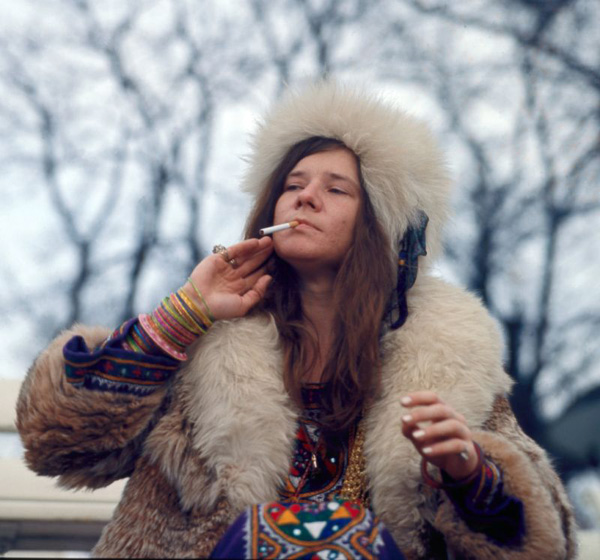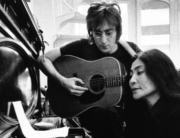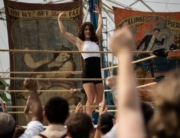Onstage, Janis Joplin wailed the blues, drank whiskey, and drove the crowds wild. Offstage, she drank whiskey, slept around, and died shooting smack in 1971. But Joplin believed in music, worshipped it, seized its power to communicate and transport. Her love of music was the purest thing in her life, and Janis: Little Girl Blue nails it. This PBS American Masters production uses staid methods to tell Joplin’s story and place it in the anarchic creativity of the 1960s. But the film is empathetic and fair, a solid tribute to a badass with a searcher’s heart.
All rock stars have one thing in common: being in the right place at the right time. The zodiac aligned spectacularly for Joplin when she fled Port Arthur, Texas, for San Francisco in time for the Summer of Love. We may all be bored with Boomer boasts of having changed the world, but in the movie’s clip, the early hippies do look startling, a wild tribe of homegrown exotics.
Joplin joined the freaky scene, befriended (and bedded) its stars, and hooked up with her band, the scruffy Big Brother and the Holding Company. Early gigs shot in black and white vibrate with Joplin’s charisma and raw emotion. Soon she was headed for the big time at Monterey Pop, Woodstock, and London’s Albert Hall. We know how the trip ends, but the ride is a blast, at least at the beginning.
Joplin’s musical evolution and rise to fame take shape in interviews with Big Brother bandmates (a little wan today), record mogul Clive Davis, the Grateful Dead’s Bob Weir, and Joplin’s manager John Cooke, a sharp observer of the turbulent, needy star. Scenes show Big Brother at work in the studio, with Joplin working hard and on her game. Kris Kristofferson recounts his pride at first hearing her version of his song “Me and Bobby McGee,” her biggest hit and a posthumous one.
Behind glitzy getups lay a character who sometime-lover Country Joe McDonald describes as having a “Huck Finn innocence.” Joplin’s brother and sister also share candid memories. Who knew that Janis Joplin wrote guilty, witty letters home to Mom just like any other young woman? Off-camera, Chan Marshall, a.k.a. Cat Power, reads the letters in a gutsy rasp, and it’s like hearing Joplin speak—hopeful, defensive, proud.
And in pain. Most rock stars have another thing in common: looking back on tough early lives and the impulse to escape. Thing is, most rock stars are men who never went through anything like the sexist torment Joplin endured in her hometown of Port Arthur. Back in the early ’60s, old-school Port Arthurites despised the insecure young girl, and they let her know it. When an old friend recounts a disgusting act of cruelty toward Joplin by her college classmates, his eyes fill with tears, even after 50 years. Early despair could help explain Joplin’s pileup of booze and drugs, dead ends with user guys, a coarse bad mama act, and the loneliness amid the adoring peace-and-love crowd.
Photos toward the end of Joplin’s life show her looking ravaged and masklike. Janis seems to soft-pedal some of the more sordid details as she circled the void, perhaps a hat tip to a soul gentler than it looked. For a rock star with a hell-raiser image, Joplin comes across as approachable, smart, and sincere in interviews. (She’s especially charming interacting with talk-show host Dick Cavett, with whom she enjoyed a simpatico odd couple rapport). And something rapturous shines through when she talks about the joy of music and the need to be one with it. ”When the audience is dancing, you’re communicating with them. You’re supposed to grow as a musician. That’s what it’s all about, getting better at what you do.”
The love of a force bigger than herself moved Janis Joplin through her short, high-octane life, and that love permeates throughout this film.







Leave A Comment